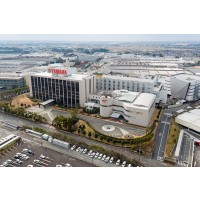Carbon-free electricity is accelerating progress toward a decarbonised society
Yamaha Motor Co., Ltd. is pleased to announce it is accelerating its carbon neutrality goal for its factories—including those overseas—to 2035. This revision represents a 15-year jump forward from the original target year of 2050.
Yamaha Motor Co., Ltd. is pleased to announce it is accelerating its carbon neutrality goal for its factories—including those overseas—to 2035.
This revision represents a 15-year jump forward from the original target year of 2050 for carbon neutrality that was set in the revised Yamaha Motor Group Environmental Plan 2050 - announced in July 2021.
To achieve this new goal, Yamaha Motor Co., Ltd. will push initiatives centred on minimising its energy use as well as relying on cleaner energy. The projected result of these changes is a 92% reduction in CO2 emissions from production operations at domestic and international Yamaha Motor factories by 2035 (compared to 2010). The remaining CO2 emissions will be offset by internationally recognised methods to achieve the targeted carbon neutrality at all its global factories.
Minimise Use - Implement a theoretical-value-based energy approach and promote process innovations
Theoretical- value-based energy approach
- Aims to minimise energy use by defining only energy truly required for creating products as having value, while considering all other types of energy consumption as targets for improvement
- Meticulously implement auto-shutdowns of equipment to aim for zero standby and fixed energy consumption
Process innovations
- Introduce equipment of minimal size with minimal energy requirements but still delivering high productivity to secure significant energy savings
Cleaner Energy - Introduce renewable energy sources and promote use of fossil-free fuels
Introduce renewable energy sources
- Switch to Chubu Electric Power's Shizuoka Green Denki (zero-carbon hydroelectric power) at all facilities and worksites under the jurisdiction of the HQ from July 2022. Gradually switch to carbon-free power use at other domestic and international group companies, targeting a complete global switch to carbon-free electricity by 2030
- Continue installations of solar panels to increase the ratio of self-generated electric power
Fossil-free fuels
- Drive the shift from fossil fuels to renewable power sources by introducing electric versions of industrial furnaces and other heat-generating factory equipment, steam-free air conditioning, and more











